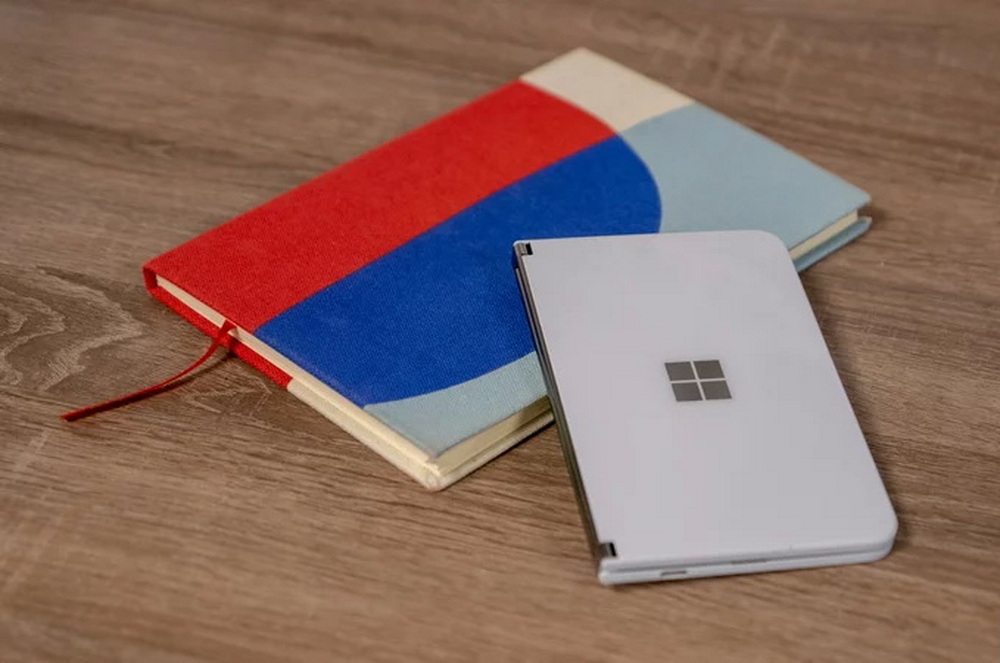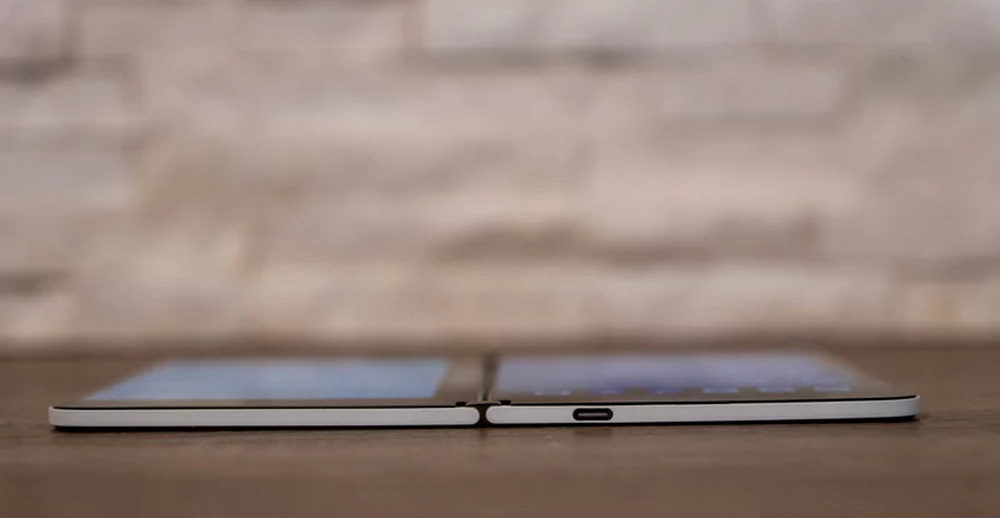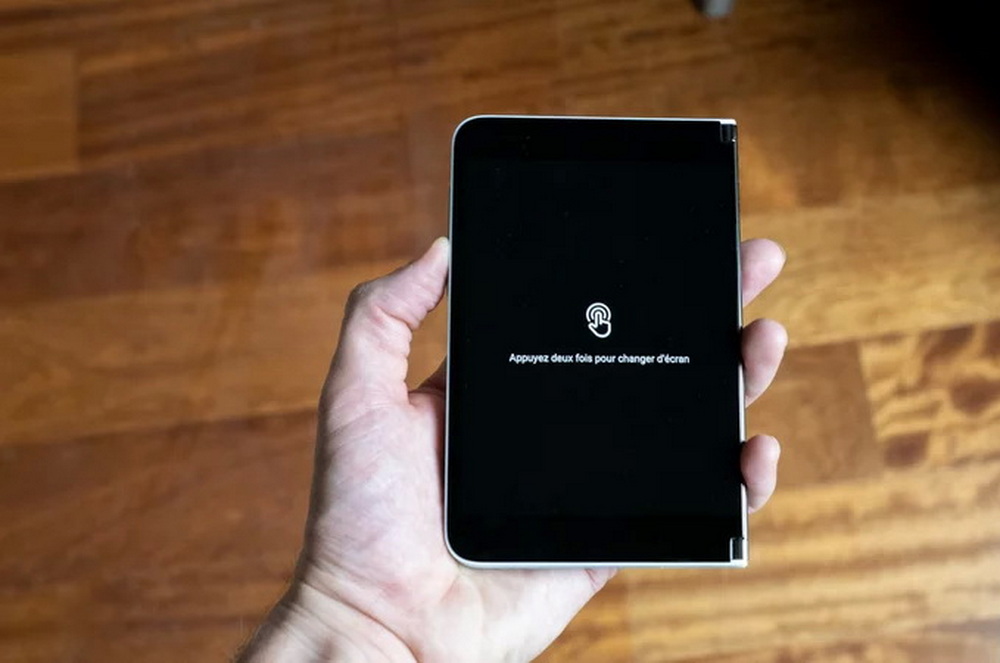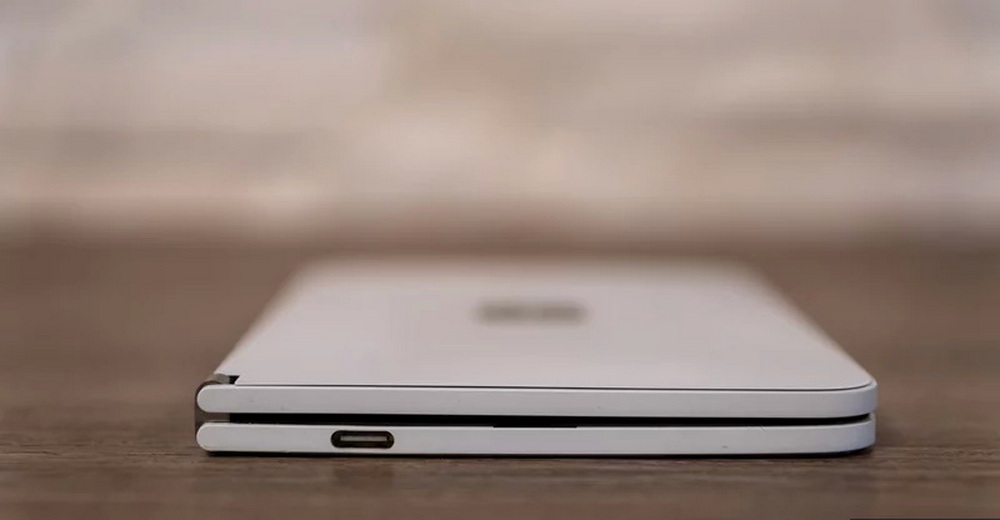Microsoft is back in telephony. And if the news may surprise, the concept surprises all the more. While Samsung, Oppo and Huawei are investing in screens that fold or roll up, Microsoft has decided to take the opposite view and offer a smartphone with two screens. Two screens to do two things at the same time. A smartphone dedicated to professional use, but also to early adopters , those passionate about new technologies eager for futuristic objects. The only problem, besides its double Oled screen, this Microsoft Surface Duo has a rather dated and minimalist technical sheet. A single photo module, a small battery, a Snapdragon chip outdated by two generations … These are all worrying elements.
To reassure, Microsoft assures that it is not really a smartphone or a tablet, but a new type of product allowing new uses. The manufacturer thus plunges back into his old dream: to transform smartphones into computers. A dated idea on which he already broke his teeth a few years ago. Now he starts again with this Surface Duo.

Ergonomics and design
Let’s start with the design of this Surface Duo. Very elegant all dressed in white, the mobile is distinguished first by its finesse. With a waist size of 9.9 mm folded and 4.8 mm unfolded, the mobile remains extremely thin no matter what; we are nowhere near the super thick Galaxy Z Fold 2 (16.8mm). Microsoft’s main achievement lies in the space between the two panels, minimal when the mobile is closed. However, unlike Samsung’s mobile or Huawei’s Mate Xs , this Surface Duo does not look like a smartphone when closed, but a book. An impression given by its exaggerated width (145.2 x 93.3 x 9.9 mm). If this remains pleasing to the eye, it complicates things once the phone is in hand, but we’ll get to that.
The 360 ° hinge allows you to observe the inside of the mobile. And this is where the problems come in. The two screens tucked away in the Surface Duo come with huge top and bottom bezels, the ones we thought we left in the world before …
Thus, the tiles occupy only 72% of each of the “pages”. The right screen, when the mobile is open, houses the one and only photo module of the product. Minimalist and restrictive equipment. It will therefore be necessary to take advantage of the 360 ° hinge to close the Surface Duo, with the screens facing out to take pictures. The right screen also houses the side fingerprint sensor.

In hand, this Surface Duo offers two distinct uses. We can either use it open, like a book, or folded, the screens outward, thanks to the 360 ° hinge, like a more classic smartphone. Whatever the choice, the experience is only unconvincing.
Let’s start with its use in open mode. The main reason for satisfaction comes from its hinge. It gives a nice impression of solidity and locks without the slightest concern at any angle chosen by the user. Still, it is extremely visible. When Microsoft mentions a single 8.1-inch Oled screen, the manufacturer is lying, omitting at the same time the huge black band separating the two panels. And this black band becomes problematic in uses, as we have seen with YouTube. When the mobile is open in landscape mode, the image is cut in two and the “pause” button, positioned in the center, is hidden by the border between the two screens. It therefore becomes complex to click on it. In a world where folding screens don’t exist, that would just be awkward,

Closed with the screens facing out, only one screen lights up. You can switch from one to the other, mainly to change your use of the photo module (selfie / landscape). To do this, just double-click on it to activate it. The transition takes a few seconds. Closed, with the screens on the outside, the very large format (93.3 mm) of the Surface Duo makes its use rather complicated. It takes one hand to hold it, two hands to use it. Long fingers are also needed to use the side buttons, positioned rather high. In this position where only one screen is used, it is possible to use the other screen. To do this, just double-click on it to activate it. The transition takes a few seconds.
Open, like a book, this sensor is impossible to access for a left-handed person. It is therefore necessary to use your right hand to unlock the mobile. And this is only the first problem in handling this Surface Duo.
Finally, the Surface Duo does not include a microSD port, NFC chip or 5G compatibility. It is not waterproof either; it should therefore not be approached to a water point.
Audio
The Surface Duo does not offer a 3.5mm mini-jack connector or a USB-C to mini-jack adapter. We were therefore unable to carry out our battery of dedicated tests. The mobile speakers, on the other hand, are of good quality.

Screen
The Surface Duo integrates two separate Oled screens, but strictly identical. What we say for one of the two will also apply to the other. Microsoft’s mobile offers two 5.6-inch 60 Hz Oled screens displaying 1350 x 1800 px for a resolution of 401 dpi at 4: 3 ratio. Luckily, these screens offer a rather satisfactory default calibration. We thus find a color temperature at 6698 K, very close to the 6500 K of the video standard. The average delta E stands at 4.2 and shows chromatic drifts in red, green or even yellow. Fortunately, it is possible to calibrate the screen by choosing the sRGB screen profile in the display settings of the mobile. This done, the color temperature does not move (6691 K), but the average delta E goes to 2.5, pledge of chromatic drifts invisible to the naked eye. Add in an almost infinite contrast ratio, Oled obliges, and you have a duo of screens perfect for viewing content.
In terms of readability, the two 60 Hz screens of the Surface Duo are not exemplary. Their brightness thus climbs to 550 cd / m², an average value on the market, but the screens make up for it with a slightly more contained reflectance (43%) than that of the competition. They do not, however, drop below 4.6 cd / m², a value that risks titillating the retina in complete darkness.
Finally, the Surface Duo screens have zero afterglow and a rather high tactile delay (98 ms).
Performances
If the spec sheet for this Surface Duo is dated, its processor may be the oldest of all of its components. This is a Snapdragon 855 which, let us remember, was unveiled in December 2018 and used for the first time in March 2019 in the Xiaomi Mi 9. We were therefore convinced that the performance of this Surface Duo would be below what is on the market right now. However, mobile took us by surprise and offers very good and perfectly relevant performance in 2021. Thus, in addition to being very fluid, the display easily climbs to 62 fps with a greedy game. It ultimately seems more limited by its 60 Hz screens than by its processor. So much so that we had fun running two gourmet games simultaneously; and the results are convincing: one was running at 30 fps and the second was around 55 fps. This Surface Duo therefore offers excellent performance. Unfortunately, the interface developed by Microsoft turns out to be too unstable to take full advantage of the American giant’s software optimization.
Photo
As we explain in the Ergonomics and Design section, this Surface Duo offers a single photo module. It therefore acts as a rear and front module at the same time, depending on the layout of the mobile. No photo versatility for this mobile.
Main module: 11 Mpx, f / 2, eq. 26 mm
By day, Microsoft’s smartphone offers pictures worthy of a tablet. The software processing is very marked. The image appears smoother and more contrasted than it should be. In front of him, the “very-treated-also” Galaxy Z Fold 2, however, seems much more natural.
At night, the photos just become catastrophic. Image processing, as powerful as it is, does not save images. It will therefore be very complicated to capture pictures at night.
Front module, portrait mode, video
The Surface Duo’s unique photo module also acts as a front module. Its portrait mode is at best average, with a passable clipping of the subjects and a little elaborate bokeh effect . Finally, according to its technical sheet, the terminal is capable of filming in 4K 60 fps. In fact, we recommend that you limit yourself to 1080p 60 fps, as 4K is very choppy and grainy.
Autonomy
With two screens to power and a battery of only 3577 mAh, Microsoft was obliged to optimize the consumption of its mobile. A half-successful mission. Yes, Microsoft seems to be getting the most out of its Snapdragon 855 chip and small battery, but that’s not enough. Faced with our SmartViser test protocol, the mobile lasted only 9 h 33 min when its two screens were used. A very low score, ensuring the extinction of the mobile at snack time during conventional use. Closed, with only one active screen, it climbs to 16 h 40 min; enough to last a little more than a day. Overall, this remains unconvincing. Even if it means using only one screen, you might as well get a smartphone that has only one and which will be much cheaper.
And recharging does not improve things since despite the small capacity of the battery, you have to wait 2 h 03 min to see the mobile regain all its strength with the 18 W charging unit provided by Microsoft.

Interface & OS of Microsoft Surface Duo
If the Microsoft Surface Duo components look dated, so does its software. At the time of this writing, the mobile is running Android 10. The transition to the 11th iteration of the operating system should be completed in the course of the year 2021. The security patches are however rather up to date, since ‘they date from January 5, 2021.
Otherwise, this Microsoft Surface Duo presents a version of Android extremely close to that developed by Google, called Android Stock. We thus find the most classic parameters and possibilities of the operating system. Microsoft just made a few improvements. It is thus possible to display an application on the left screen and to display a second on the right screen, simply by sliding your finger on the lower edge of the mobile. It is also possible to spread the applications of the fixed icon bar on the two tiles or to concentrate them on one of the two. Double-clicking to switch screens is also an addition from the Seattle giant. Finally, some applications have been optimized for display intelligently on both slabs. Outlook will for example show the list of emails on one screen and the content on the other.
Still, few applications are optimized and many software issues are to be deplored. The mobile often takes a few seconds before changing its display, displays a black screen for doubtful reasons, or even stops working for no reason. By showing YouTube simultaneously on both screens, the pause button fits into the hinge, so it’s hard to reach. In 3DS position, when a video is launched on the top screen and we want to write a message on the bottom screen, the display prevents from knowing what we are writing. So many problems that make the experience unconvincing and therefore irrelevant. We will quickly have to return to a smartphone with a stable interface, or even a computer or a tablet for greater viewing comfort.
Microsoft Surface Duo – Conclusion
According to Microsoft, this Microsoft Surface Duo is neither a smartphone nor a tablet. This is good since it is neither a good smartphone nor a good tablet. Even if the concept would be relevant, its realization leaves much to be desired. Its catastrophic photos, its low autonomy with two screens and above all the innumerable software aberrations make it an unusable and irrelevant product, even for professional use.
STRONG POINTS of Microsoft Surface Duo
- Stylish smartphone.
- Less than a centimeter thick closed.
- Very well optimized Snapdragon 855 chip.
- Two well calibrated screens.
WEAK POINTS of Microsoft Surface Duo
- Complex handling.
- Lots of software issues.
- Aberrations in the user experience.
- Poor photos.
- Battery life at two screens too low.
- Two hours to charge it.
- No 5G.
- Not waterproof.
- No NFC.
- No wireless charging.






